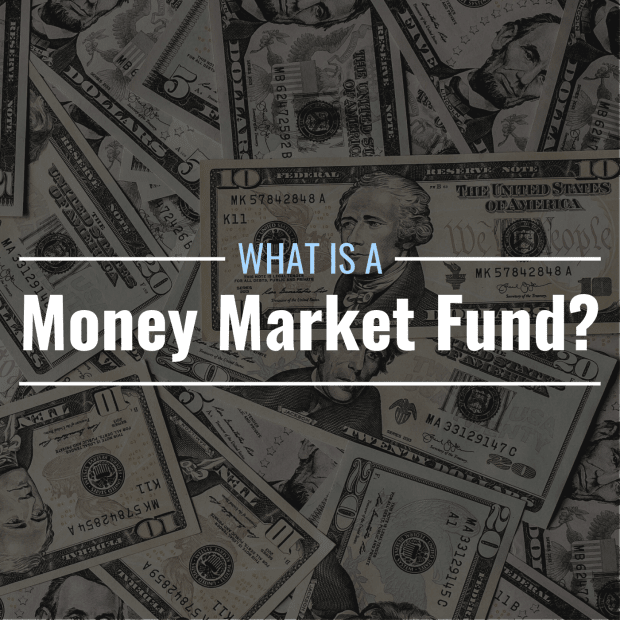
Mutual funds are professionally managed pooled investment vehicles whose shares can be bought and sold once per trading day at the end of the trading session. Many different types exist, and they vary substantially in terms of fees charged, management style, asset allocation, and purpose.
What Is a Money Market Mutual Fund? What Do They Invest In?
A money market mutual fund is one that invests only in “money market” instruments, also known as cash equivalents. These include short-term, low-risk, highly liquid instruments like the following:
- Short-term treasury securities
- Municipal bonds
- Overnight reserves
- Certificates of deposit
- Commercial paper
What Is the Purpose of a Money Market Mutual Fund? How Do They Work?
The purpose of a money market mutual fund isn’t long-term capital appreciation—it’s short-term income generation. Investors use money market funds as parking spots for uninvested cash—especially during high-interest-rate environments—because the income payments these funds produce tend to exceed the interest that can be earned from simple savings accounts and even money market savings accounts (more on these later).
During periods of high inflation, money kept as cash, even in an interest-bearing savings account, often loses purchasing power as it is devalued by rising prices. Money market funds allow cash to earn interest at a higher (but still modest) rate so it doesn’t get devalued much as it would if it was held as cash or in a savings account.
Many money market funds aim to keep their net asset value (essentially the price per share or unit of the fund) at $1, passing all interest earned onto investors as monthly dividend payments.
An investor, therefore, can park their uninvested cash in a money market fund for a few months, collecting interest on a monthly basis, then redeem their shares (for the same amount they originally invested, assuming the fund’s NAV remained at $1) and reinvest their principal and the interest they earned on it somewhere else.
How Much Interest Do Money Market Funds Yield?
The yields of money market funds are highly dependent on the prevailing interest rates offered by the short-term debt securities they invest in, and these depend to some degree on the Federal funds rate, which is set by the Federal Reserve in response to current inflation levels and other economic data.
For this reason, money market fund yields are higher during periods of high interest rates, which often coincide with or follow periods of higher-than-usual inflation.
Common Types of Money Market Funds
In general, money market funds are categorized by the type of securities they invest in within the money market. The following are some of the most common.
Tax-Exempt Funds
Tax-exempt money market funds invest mostly in municipal bonds, as municipal bond interest is exempt from federal (and in some cases, state) income tax. These funds may also invest a small percentage of funds in other debt securities that are not tax-free, but their aim is to provide investors with modest, mostly tax-free interest income.
Treasury Funds
Treasury-themed money market funds invest in federal debt securities like treasury bills, treasury notes, and treasury bonds, all of which are considered very low risk because they are backed by the “full faith and credit” of the U.S. government.
Government Money Funds
Government money funds invest almost entirely in securities that are collateralized, or backed by cash or government securities. This type of money market fund is considered the safest due to its investments being backed by collateral.
Prime Money Funds
Prime money funds invest in floating-rate notes (those with interest rates that vary according o a benchmark), corporate-issued commercial paper, and other non-collateralized debt instruments. These are probably the riskiest type of money market funds, but they are still considered relatively safe investments, especially during periods of economic and market stability.
Advantages & Disadvantages of Money Market Funds
Money Market Mutual Funds vs. Money Market Savings Accounts: What’s the Difference?
Money market mutual funds, although relatively low risk, carry no guarantee of return of principal and are not insured. In this sense, they function like other mutual funds.
Technically, they are investment vehicles, not savings instruments. While it’s very unlikely, money market fund investors can lose their principal investment—this occurred to a limited degree during the financial crisis of 2007 and 2008.
Money market savings accounts, on the other hand, are actual bank accounts, so they are usually FDIC-insured up to $250,000. They pay higher interest rates than traditional savings accounts but lower rates than money market mutual funds.
What Does “Breaking the Buck” Mean? Is It Common?
If the net asset value (share price) of a money market fund falls below $1, it is said to have “broken the buck.” This is rare, but it can happen due to rapid price changes in the money market, shifts in prevailing interest rates, or the misuse of leverage by the fund’s manager.
When a fund breaks the buck, especially if its NAV doesn’t quickly return to $1, many investors may try to redeem their shares over a short period (similar to a bank run), resulting in the fund not having sufficient liquidity to cash out investors’ shares.







